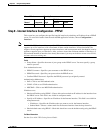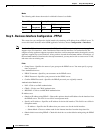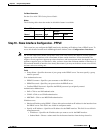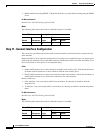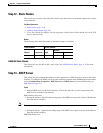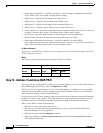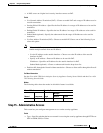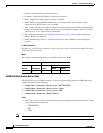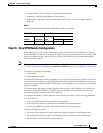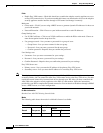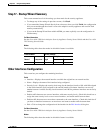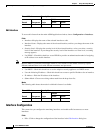
5-17
Cisco ASDM User Guide
OL-16647-01
Chapter 5 Using the Startup Wizard
Startup Wizard Screens for the ASA 5505 Adaptive Security Appliance
• Interface Name—Choose from a list of predetermined interfaces.
• IP Address—Specifies an IP address for the interface.
• Subnet Mask—Specifies a subnet mask for the interface from a selection of subnet mask IP
addresses.
Modes
The following table shows the modes in which this feature is available:
Step 16 - Easy VPN Remote Configuration
This screen lets you form a secure VPN tunnel between the adaptive security appliance and a remote
Cisco VPN 3000 concentrator, Cisco router, or adaptive security appliance that is acting as an Easy VPN
server. The adaptive security appliance acts as an Easy VPN remote device to enable deployment of
VPNs to remote locations.
Note To access this screen, you must check the Configure the device for Teleworker usage check box in Step
2 - Basic Configuration and uncheck the Enable Auto Update check box in the Interface Configuration.
Two modes of operation are available:
• Client mode
• Network extension mode
In client mode, the adaptive security appliance does not expose the IP addresses of clients on the inside
network. Instead, the adaptive security appliance uses NAT to translate the IP addresses on the private
network to a single, assigned IP address. In this mode, you cannot ping or access any device from outside
the private network.
In extension mode, the adaptive security appliance does not protect the IP addresses of local hosts by
substituting an assigned IP address. Therefore, hosts on the other side of the VPN connection can
communicate directly with hosts on the local network.
To configure the adaptive security appliance in one of these two modes, use the following guidelines:
Use client mode if:
• You want VPN connections to be initiated by client traffic.
• You want the IP addresses of local hosts to be hidden from remote networks.
• You are using DHCP on the ASA 5505 to provide IP addresses to local hosts.
Use network extension mode if:
• You want VPN connections to remain open even when not required for transmitting traffic.
• You want remote hosts to be able to communicate directly with hosts on the local network.
• Hosts on the local network have static IP addresses.
Firewall Mode Security Context
Routed Transparent Single
Multiple
Context System
• • • •—



